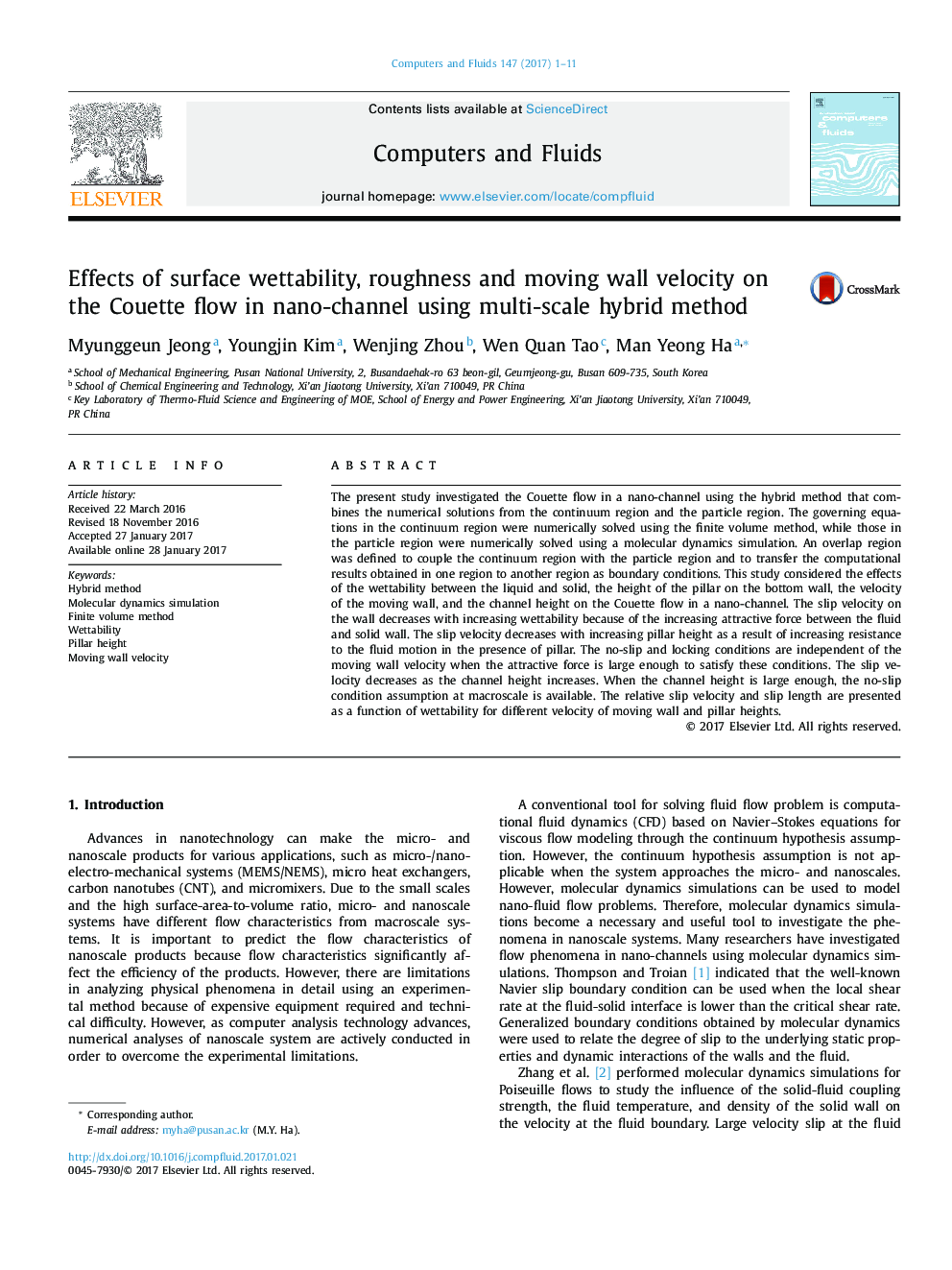| کد مقاله | کد نشریه | سال انتشار | مقاله انگلیسی | نسخه تمام متن |
|---|---|---|---|---|
| 5011897 | 1462664 | 2017 | 11 صفحه PDF | دانلود رایگان |
- The slip velocity on the wall decreases with increasing wettability.
- The slip velocity decreases with increasing pillar height.
- The no-slip and locking conditions are independent of the moving wall velocity.
The present study investigated the Couette flow in a nano-channel using the hybrid method that combines the numerical solutions from the continuum region and the particle region. The governing equations in the continuum region were numerically solved using the finite volume method, while those in the particle region were numerically solved using a molecular dynamics simulation. An overlap region was defined to couple the continuum region with the particle region and to transfer the computational results obtained in one region to another region as boundary conditions. This study considered the effects of the wettability between the liquid and solid, the height of the pillar on the bottom wall, the velocity of the moving wall, and the channel height on the Couette flow in a nano-channel. The slip velocity on the wall decreases with increasing wettability because of the increasing attractive force between the fluid and solid wall. The slip velocity decreases with increasing pillar height as a result of increasing resistance to the fluid motion in the presence of pillar. The no-slip and locking conditions are independent of the moving wall velocity when the attractive force is large enough to satisfy these conditions. The slip velocity decreases as the channel height increases. When the channel height is large enough, the no-slip condition assumption at macroscale is available. The relative slip velocity and slip length are presented as a function of wettability for different velocity of moving wall and pillar heights.
Journal: Computers & Fluids - Volume 147, 2 April 2017, Pages 1-11
